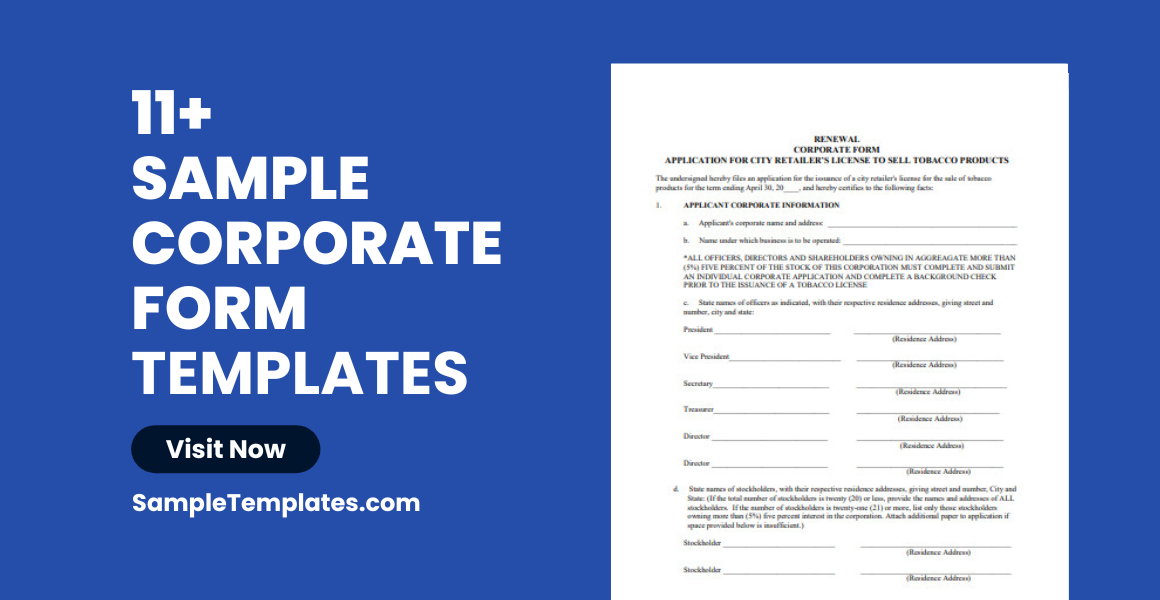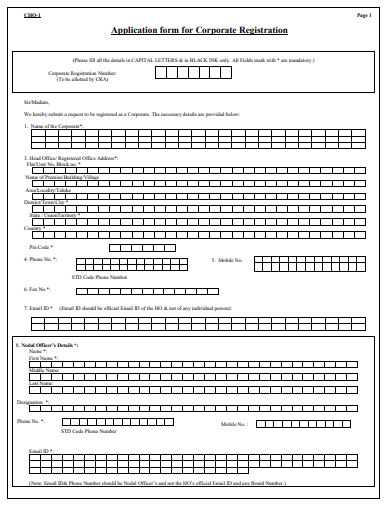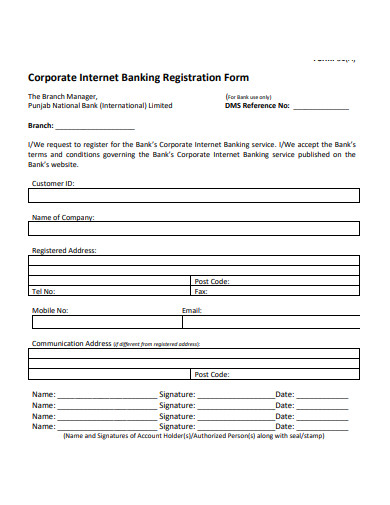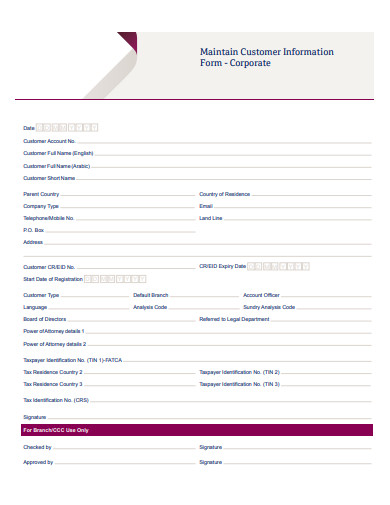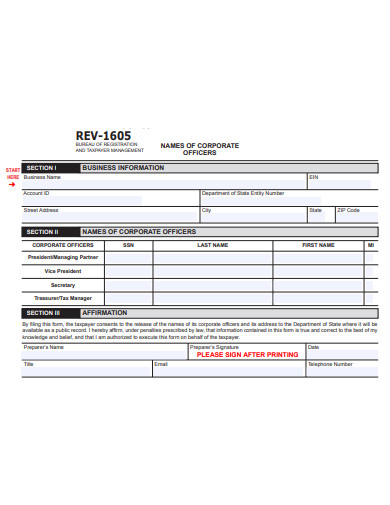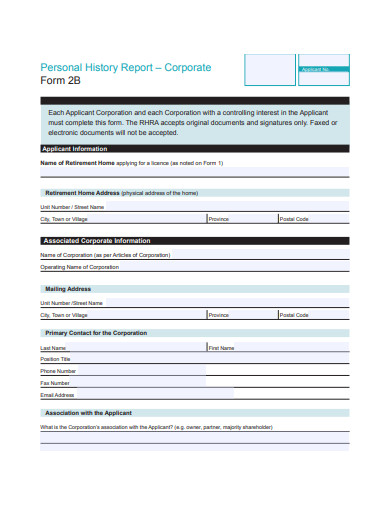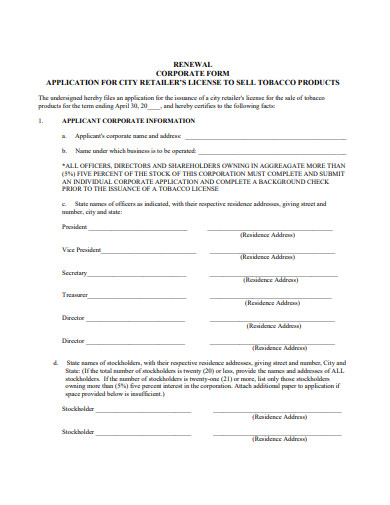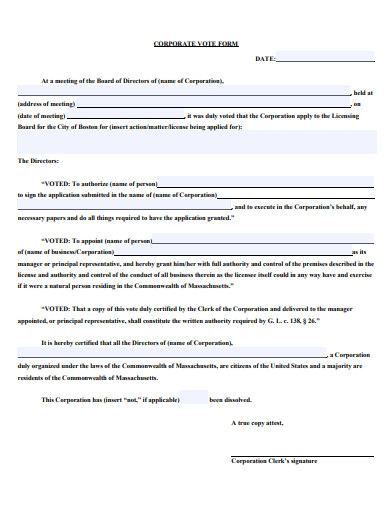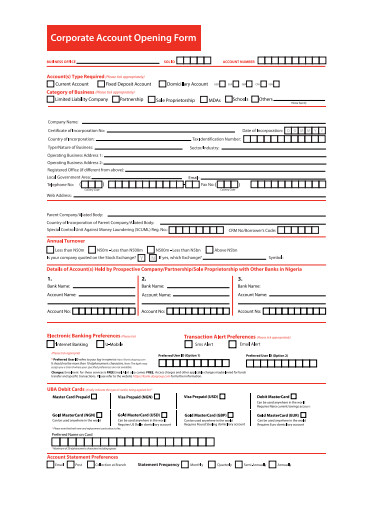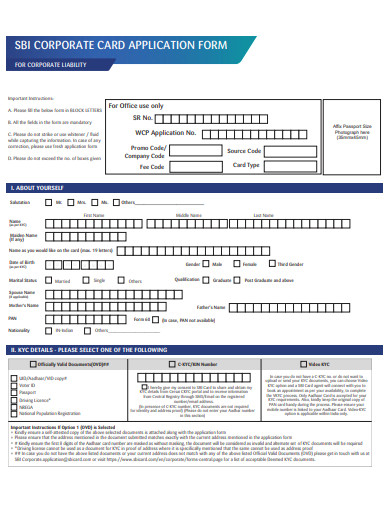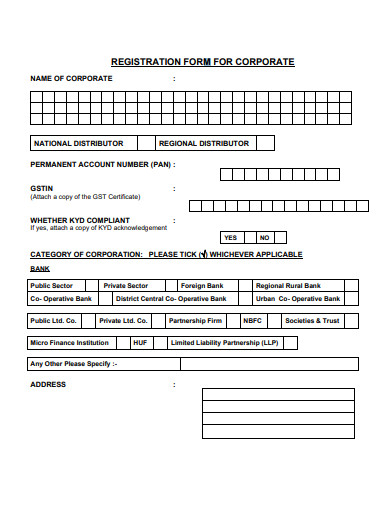In today’s dynamic business landscape, the ‘Corporate Form’ stands as a cornerstone. This structure, not only streamlines operations but ensures a robust governance model. With numerous enterprises vying for supremacy, selecting the right corporate framework can be the differentiating factor. The term ‘Corporate Sample Form’ encapsulates strategies, structures, and philosophies that drive modern businesses. Grasping its intricacies is essential for entrepreneurs, stakeholders, and professionals alike. Dive into the nuances and understand its profound impact.
11+ Corporate Form Samples
1. IT Corporate Resolution Form Template

2. Corporate Acknowledgement Affidavit Form Template
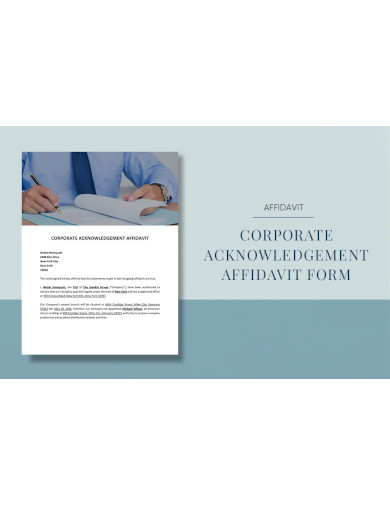
3. Corporate Registration Application Form Template
4. Corporate Internet Banking Registration Form Template
What is Corporate Form?
Origins and Evolution
The idea of a corporation is not new. It dates back to ancient civilizations where merchants and traders formed guilds and associations. In the Roman era, there were publicani, organizations that bid on sample contracts to collect revenue or carry out specific civil projects. The modern corporate form, as we understand it, has its roots in the European age of exploration and colonization.
Definition and Basics
A corporation is a legal entity that is separate and distinct from its owners. It has the legal rights to act as an individual does – it can sue and be sued, own property, and enter into contracts. The key difference between a corporation and a sole proprietorship or partnership is the concept of limited liability. This means that the owners (or shareholders) of the corporation are not personally responsible for the company’s debts or liabilities.
Benefits of Incorporation
- Limited Liability: As mentioned, one of the primary benefits is limited liability protection. Shareholders risk only the amount they invested in the company and no more.
- Perpetual Existence: Unlike partnerships or sole proprietorships, a corporation can continue indefinitely, irrespective of what happens to its individual owners or shareholders.
- Easier Capital Generation: Through the issuance of stocks or bonds, corporations have a more straightforward path to raise funds.
- Credibility: The incorporated status can lend a certain legitimacy to businesses, making it easier to establish trust with consumers and other businesses. You can also see more templates like Corporate Resolution Forms.
Key Features of the Corporate Forms
The key features of the corporate form include:
- Separate Legal Entity: The corporation exists independently of its owners and has its own legal identity.
- Limited Liability: Shareholders’ financial responsibility is limited to their sample investment in the corporation. They are generally not personally liable for the corporation’s debts.
- Perpetual Succession: The corporation continues to exist even if its shareholders change, retire, or pass away.
- Transferability of Shares: Shares in a corporation can be bought, sold, or transferred without affecting the corporation’s continuity.
- Centralized Management: The management of a corporation is centralized in a board of directors or similar governing body.
- Ability to Raise Capital: Corporations can raise funds by issuing shares or bonds to the public.
- Double Taxation: Profits of a corporation may be taxed at the corporate level, and then again at the individual level when distributed as dividends to shareholders (specific to C Corporations).
- Regulatory Compliance: Corporations are subject to various regulations and must adhere to certain legal formalities, like holding regular board meetings and maintaining specific records.
Types of Corporate Forms
There are several types of corporations, each with its own set of characteristics:
- C Corporation: This is the standard corporation form. It’s taxed separately from its owners.
- S Corporation: This form avoids double taxation, as the corporation itself isn’t taxed, but the income or loss is reported on the personal tax returns of the shareholders.
- Limited Liability Company (LLC): Combining features of both partnerships and corporations, LLCs offer flexibility in terms of tax and operations.
- Non-Profit Corporation: Established for charitable, educational, or other non-commercial ventures, they benefit from tax-exempt status but must adhere to certain operational constraints.
Incorporation Process
The specifics can vary by jurisdiction, but generally, incorporating involves:
- Choosing a unique business name compliant with the state’s corporation rules.
- Filing the Articles of Incorporation with the relevant state agency.
- Appointing the board of directors.
- Drafting corporate bylaws to sample outline the operating procedures.
- Obtaining the necessary licenses and permits.
Challenges and Criticisms
While corporations offer numerous benefits, they aren’t without criticisms.
- Ethical Concerns: The pursuit of profits can sometimes overshadow ethical considerations, leading to negative social impacts.
- Regulatory and Tax Complexity: Managing a corporation can be bureaucratically challenging due to numerous regulations and intricate tax structures.
- Impersonality: As entities grow, they can become faceless entities, potentially leading to reduced personal responsibility and accountability.
The Future of the Corporate Form
The concept of what a corporation is and its role in society is continually evolving. Social responsibility, sustainability, and ethics are becoming as essential as profitability. There’s a growing emphasis on corporations having a purpose beyond just profit. This shift is reflected in the rise of B corporations or benefit corporations, which aim to balance purpose and profit by considering their impact on employees, the environment, and the community. You can also see more templates like Business Forms.
5. Corporate Form Template
6. Corporate Officers Form Template
7. Corporate Personal History Report Form Template
8. Renewal Corporate Form Template
9. Corporate Vote Form Template
10. Corporate Accounting Opening Form Template
11. Corporate Card Application Form Template
12. Corporate Registration Form Template
How to Create a Corporate Form?
Creating a corporate form is essential for businesses to streamline communication, gather information, or even maintain records. Whether you’re designing a form for HR processes, customer sample feedback, or inventory management, having a structured, clear format is essential. Here’s how to create a corporate form in five straightforward steps:
1. Identify the Purpose of the Form
Before diving into design, it’s crucial to pinpoint the exact purpose of your form. What do you hope to achieve with it? Are you looking to gather data from employees, obtain feedback from customers, or perhaps streamline a particular internal process? Identifying the purpose will guide your content and design decisions, ensuring the form is efficient and effective. For instance, a form for collecting employee health details will be vastly different from one designed to record quarterly sales data.
2. Choose the Right Platform and Template
There are numerous software and online platforms available for creating corporate forms, from Microsoft Word and Excel to specialized tools like Google Forms or SurveyMonkey. Your choice will depend on the complexity of your form and the kind of data you’re collecting. Once you’ve chosen a platform, explore its template options. Many platforms offer templates tailored to various corporate needs, which can be a great starting point. These templates can save time and ensure your form meets industry standards.
3. Design for User Experience (UX)
It’s essential to ensure that your form is user-friendly. This means questions should be clear and concise, with logical flow and easy navigation. If you’re using an online platform, consider features like drop-down menus, tick boxes, or sliding scales to make input easier for users. Moreover, group related questions together, use consistent fonts and colors, and ensure there’s a logical progression from one section to the next. Remember, the easier your form is to fill out, the higher the chances of it being completed accurately.
4. Include Essential Form Fields
The fields you include should align with the form’s purpose identified in step one. However, there are some general guidelines to follow:
- Always have a section for personal details if required, such as name, department, or contact information.
- Use open-ended questions sparingly. They can be time-consuming for respondents.
- For feedback or survey forms, consider using a rating scale to quantify responses.
- Always provide an ‘additional comments’ or ‘feedback’ section at the end for any points that might not fit into predefined categories.
5. Test and Revise
Before officially deploying your corporate form, conduct a test run. Share it with a small group within the corporation, gather feedback, and make necessary revisions. Testing ensures any ambiguities or design flaws are addressed, increasing the form’s efficiency. After implementing changes, it’s wise to retest and refine as many times as needed.
What is Corporate Form in Company Law?
In company law, the corporate form refers to a business structure where the company is recognized as a separate legal entity from its owners. This means the company can own assets, enter into contracts, sue and be sued, and is responsible for its own debts, limiting the liability of its shareholders.
In conclusion, the corporate form has been an integral part of economic development and growth. It offers many advantages but also comes with its set of challenges. As the global business landscape evolves, so too will the nature and role of corporations in society. It’s essential to understand the foundational elements of the corporate form to navigate and leverage its benefits effectively. You can also see more templates like Registration Forms.
Related Posts
Parent Consent Form Samples & Templates
Sample Release of Liability Forms
Sample Training Feedback Forms
Sample Sworn Affidavit Forms
Agreement Form Samples & Templates
Vehicle Inspection Forms Samples & Templates
Sample Employee Advance Forms
Sample Child Travel Consent Forms
Sample Testimonial Request Forms
Sample Employee Details Forms
Sample Divorce Forms
Sample Attestation Forms
Employee Performance Appraisal Form Templates
FREE 9+ Sample Presentation Evaluation Forms in MS Word
FREE 10+ School Admission Form Samples & Templates in MS Word | PDF
